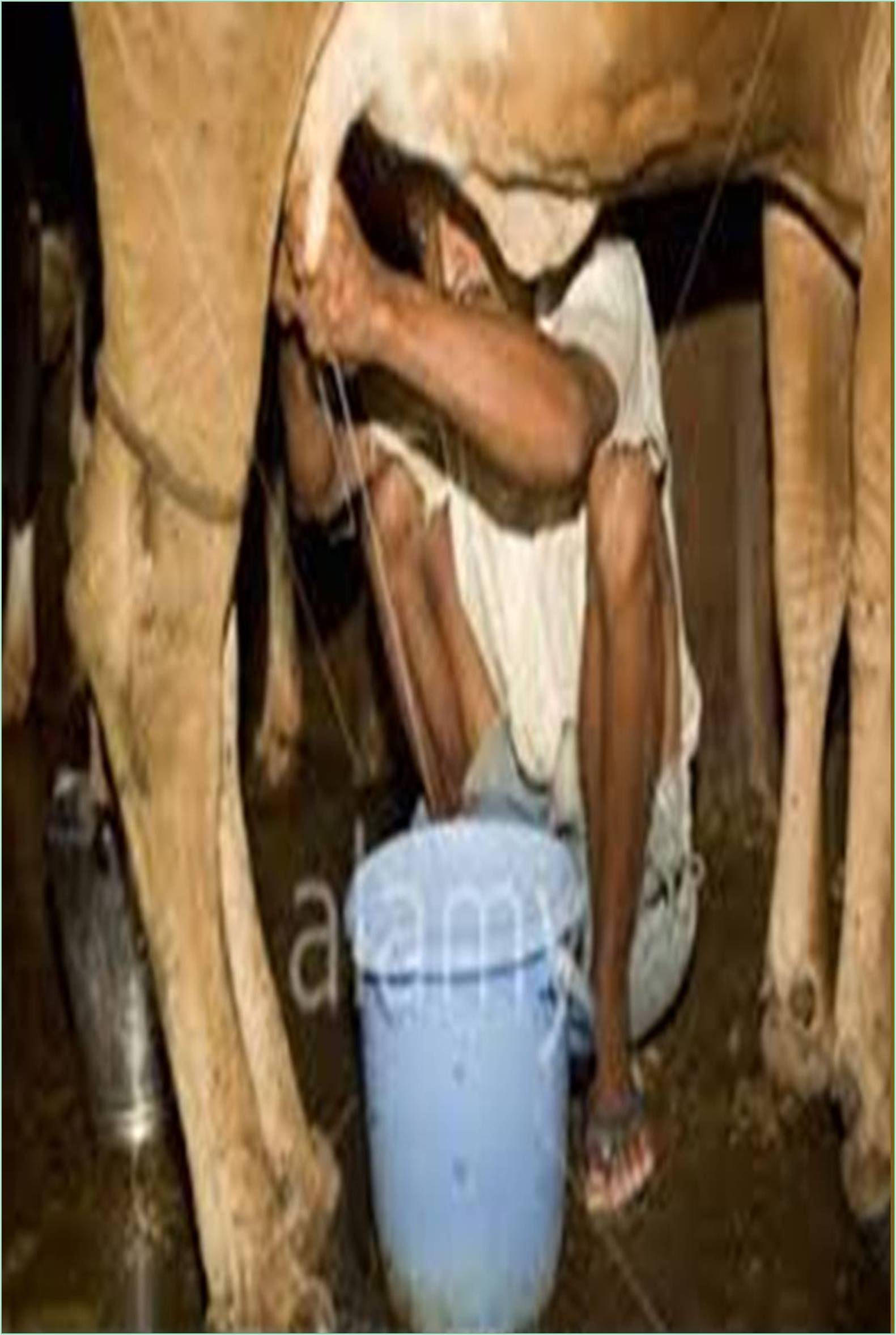



Received: 01-Jul-2022, Manuscript No. GJDFM-22-73187; Editor assigned: 04-Jul-2022, Pre QC No. GJDFM-22-73187 (PQ); Reviewed: 21-Jul-2022, QC No. GJDFM-22-73187; Revised: 29-Jul-2022, Manuscript No. GJDFM-22-73187 (R); Published: 05-Aug-2022, DOI: 10.15651/2449-1861.22.7.077
Cattle, water buffalo, people, goats, sheep, and, less frequently, camels, horses, and donkeys all have mammary glands that can be milked. The animal must be pregnant or have recently given birth in order to milk it, either manually or mechanically. The term "milker" can apply to either the person who milks the animal or the animal itself.
When milking by hand, the udder's teats are massaged and pulled down to release the milk into a bucket. The upper portion of the teat is closed between the finger and thumb, holding milk inside. The lower portion is then pressed by the other fingers, forcing the milk out of the hole in the teat's tip. The thumb and fingers close the top of the teat, which is then slid downward, pushing the milk toward the bottom.
In the developed world, milking machines are used for the majority of milking. The cow's teats are fitted with teat cups, which extract the milk by switching between vacuum and regular air pressure. Before being added to a sizable bulk tank of milk for storage, the milk is filtered and cooled. A cow can be machine milked twice a day for an average of 5-7 minutes each time. Cows can now choose when to milk on their own thanks to robotic milking, but they still need to interact with people. Mastitis in cows is a well-known adverse effect of mechanical milking. Infections can be brought on by non-sterile equipment that introduces bacteria into the teat. Physical discomfort is another negative effect.
Large dairy farmers utilize elaborate milking equipment on their cows, but if we have one or a few cows, we don't need one of those. Techniques for hand milking developed over millennia continue to be effective. Not all methods are effective with all cows, but one enables we to perform a mastitis check before beginning the milking procedure.
First Cleaning
Cleaning were hands and the cow's udder lowers the likelihood that she'll develop mastitis, or an udder infection. After washing were hands with soap and water, clean the udder properly. Use a clean, moist towel to wipe the udder's bottom and sides, and then use a different towel to properly dry it. As we milk her, any moisture left on the udder may cause the skin to flake or split. When we're done milking, clean each teat by dipping it in a tiny cup of iodine or teat dip to get rid of any bacteria.
Stripping Method
When we are prepared to begin milking the cow, take a test and hold it between were thumb and fingers in each hand. Beginning at the top of the teat, move were thumb and forefinger down its length, compressing it as we go. Using this method, squirt a few streams of milk from each teat into different glasses. Next, examine the milk for any flakes or clots that could indicate mastitis. Never ingest milk from a team that is contaminated. Stop using the milk-squirting technique once we have extracted enough milk for inspection. The cow's skin may become irritated if we slide were fingers along the teat too quickly. Use the stripping technique for a few squirts at the conclusion of was milking session.
Full-Hand Method
Using were entire hand is the correct method for the most of were milking time. Wrap were thumb and forefinger over the top of the teat to secure it, and then squeeze the teat while compressing it and encircling it with were other fingers. Without having to slide were palm up and down the teat, this propels the milk that is already in the teat out in a stream. Release the compression while keeping hold of the teat in part. This enables more milk to spill from the udder into the teat so we can squeeze the milk out by pinching were fingers from top to bottom. There is less possibility of irritating the cow because were hand isn't slid along the teat.